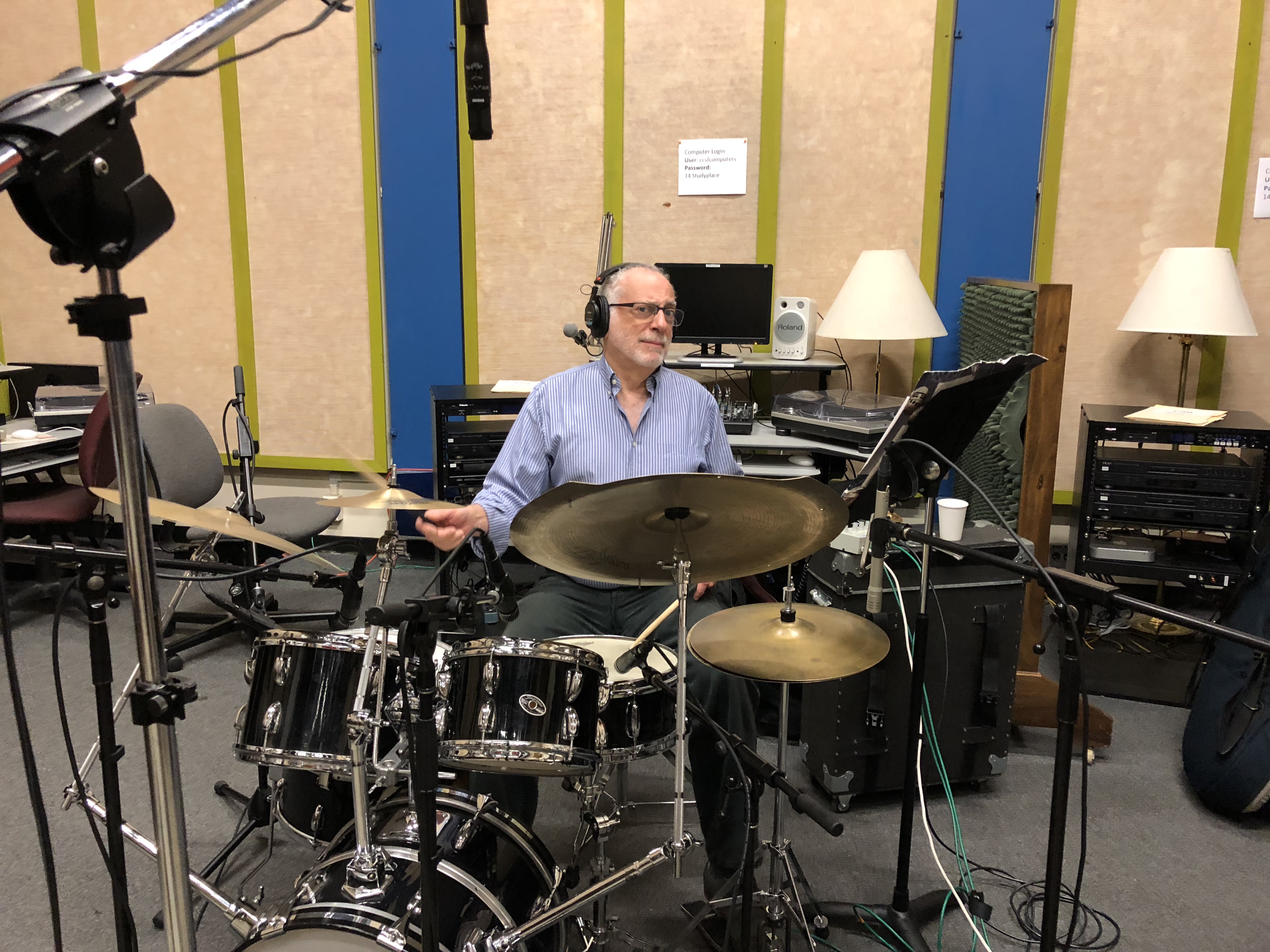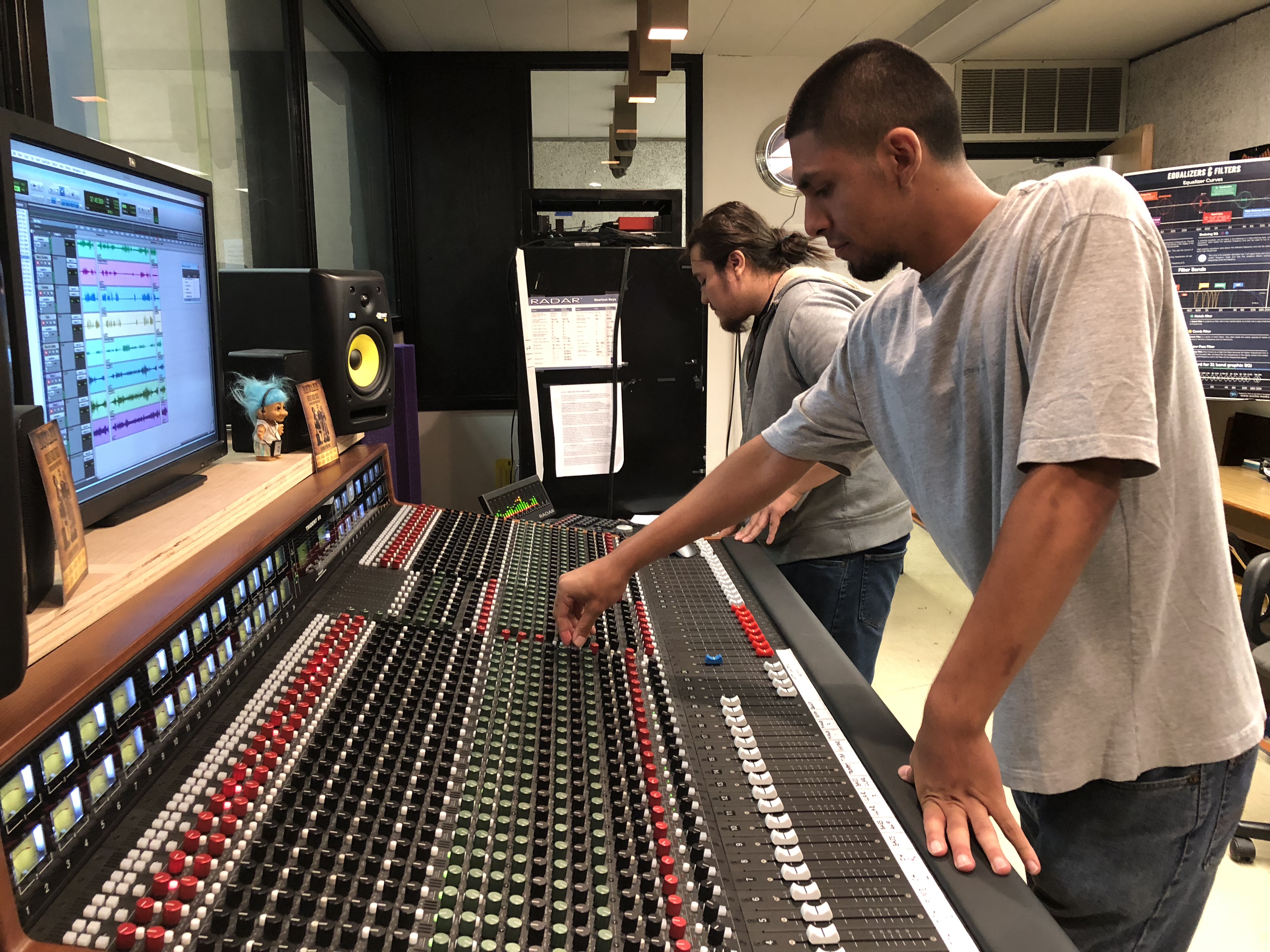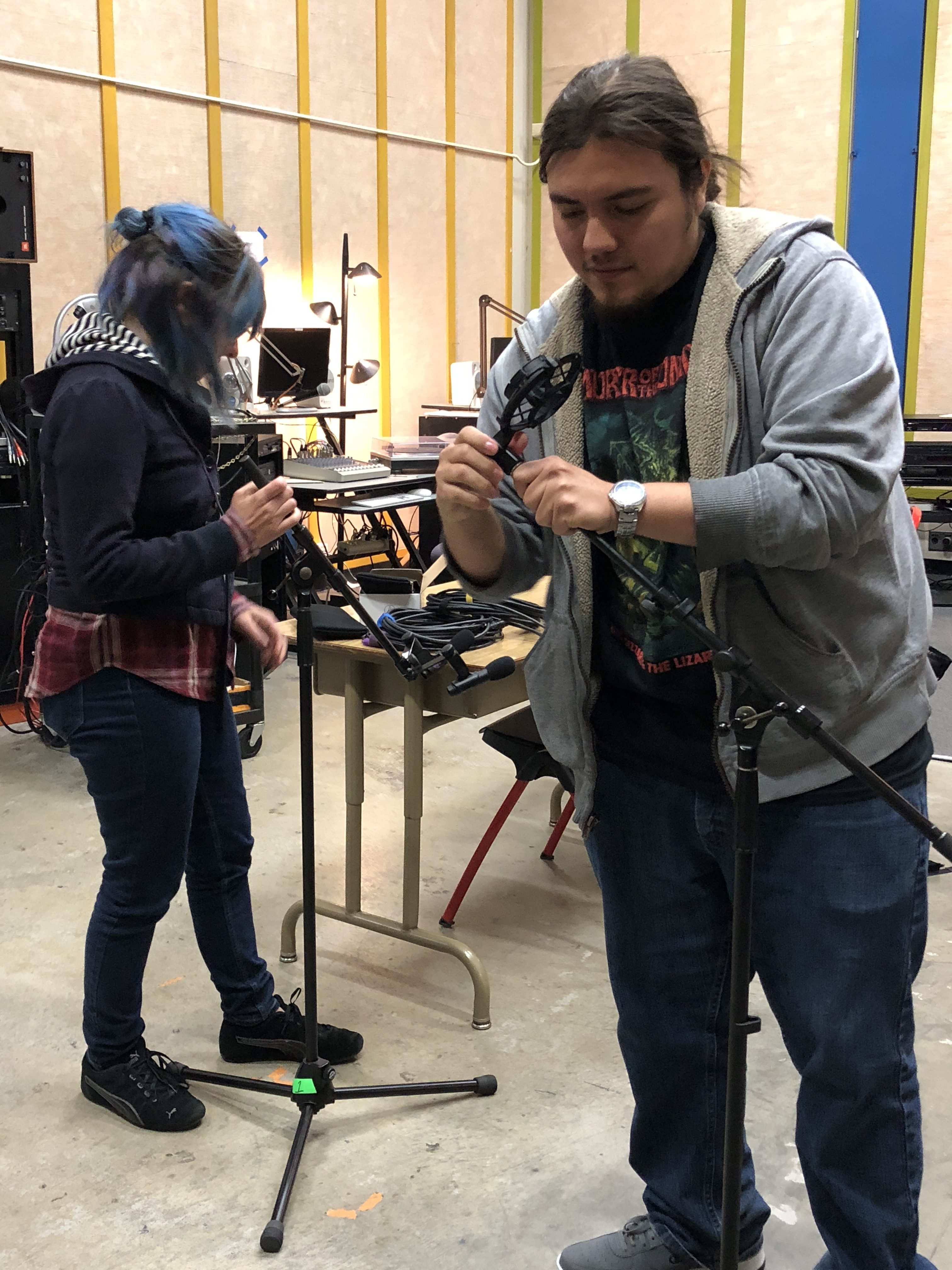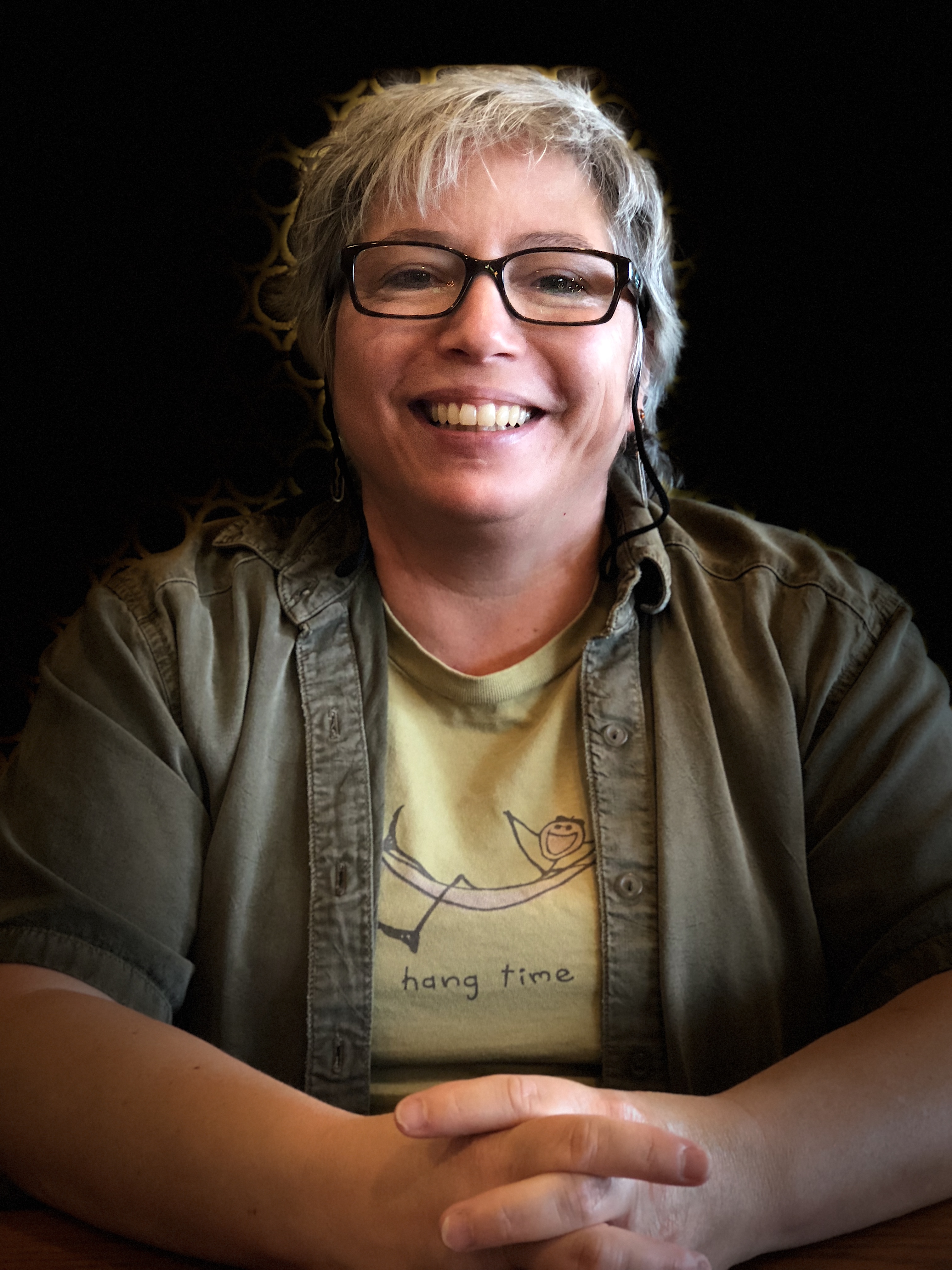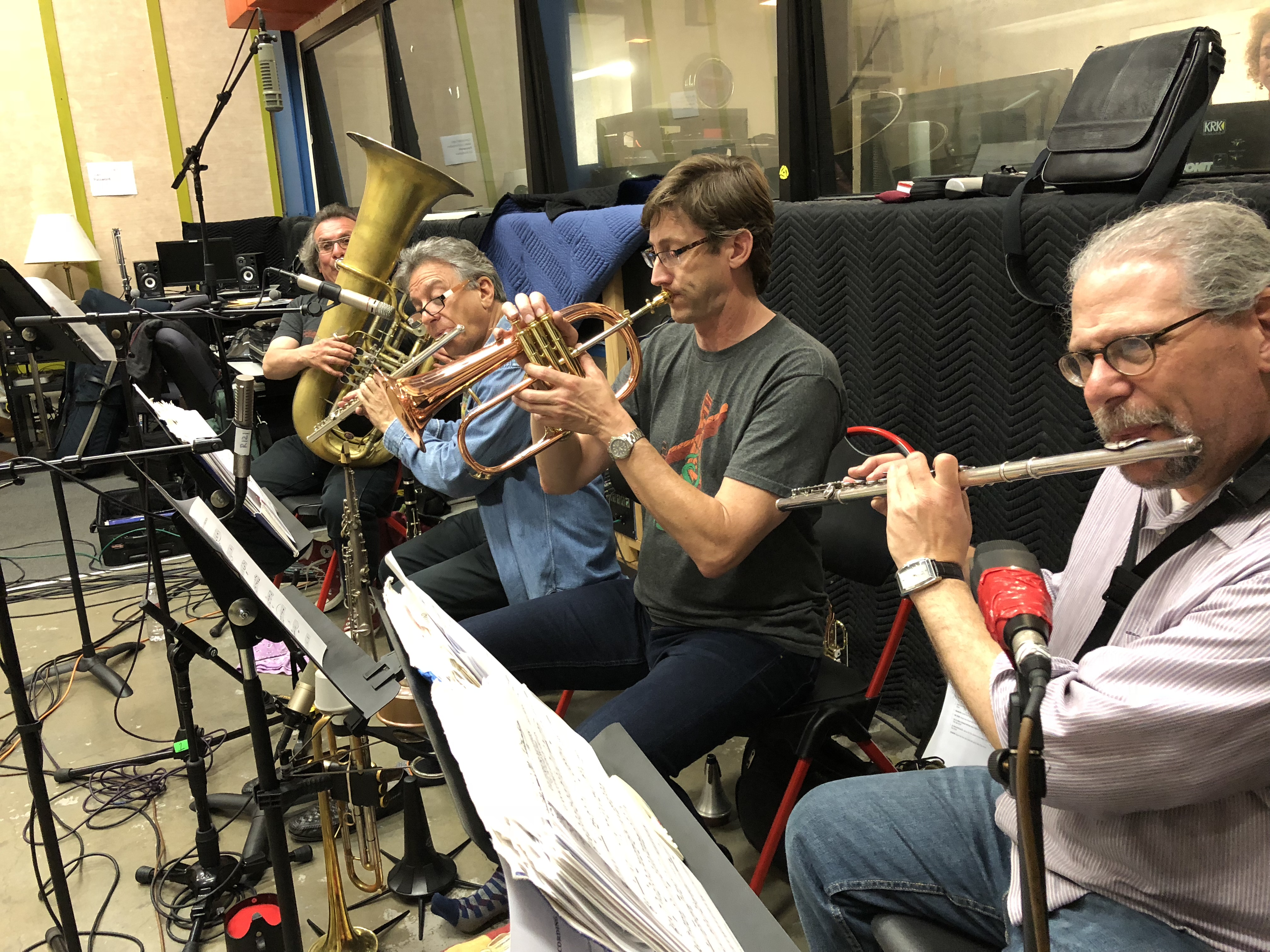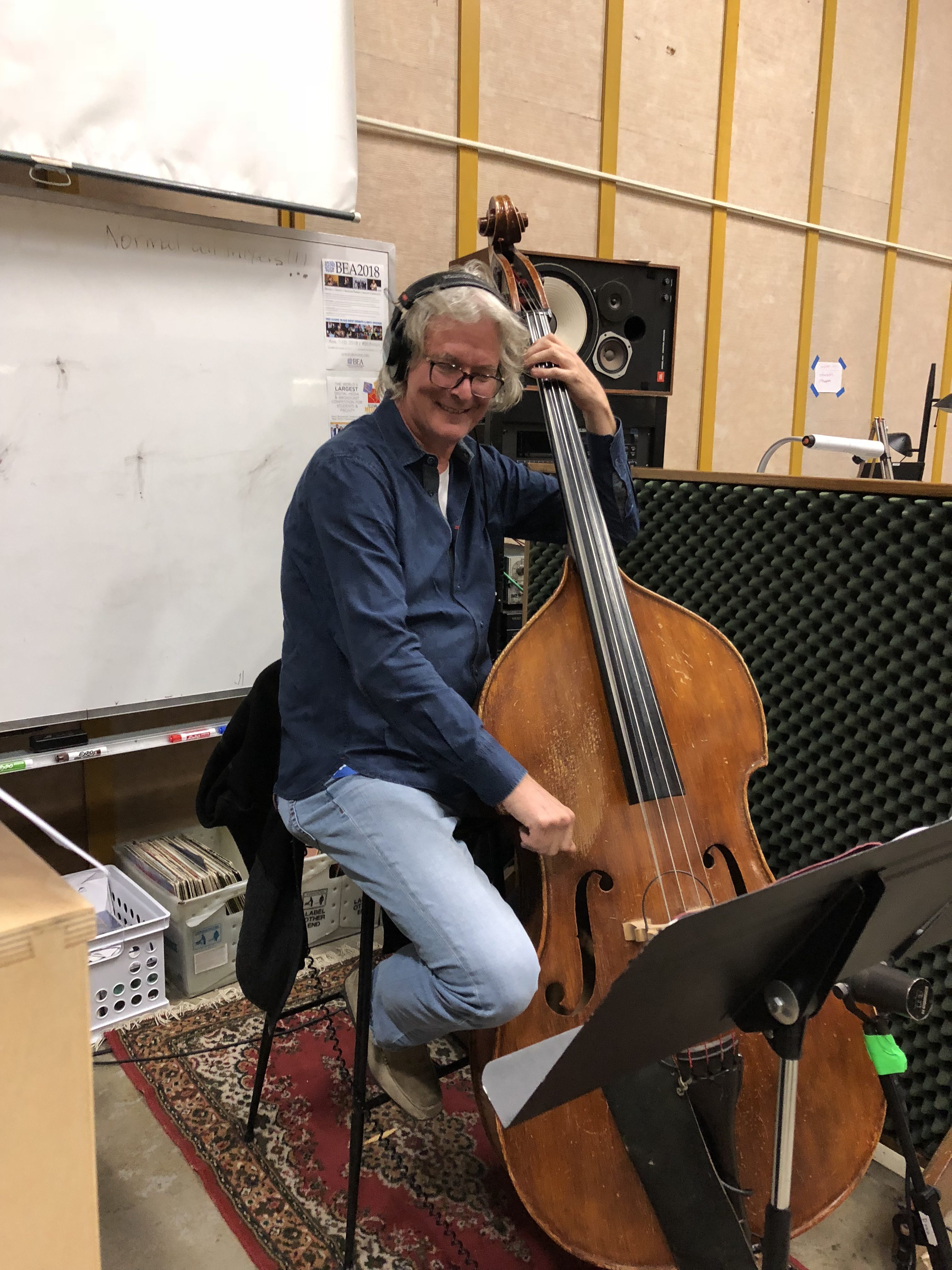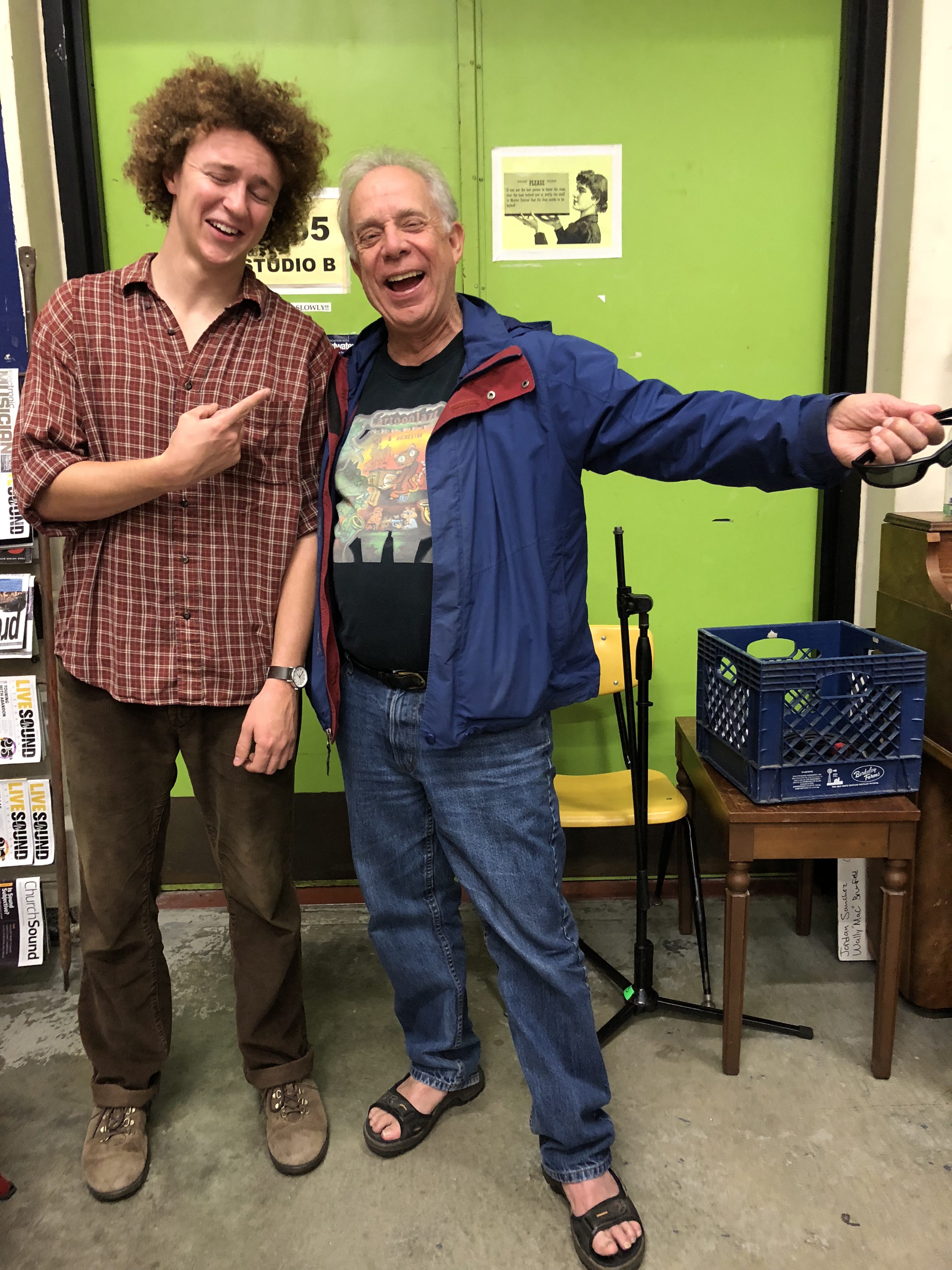Grammy nominated City College music professor records original compositions
By Adina J. Pernell
Broadcast Electronic Media Department (BEMA) recording Studio B was bustling with hectic energy on Oct. 23 when composer, guitarist and City College music professor Lennis “Lenny” Carlson stepped outside for a brief respite from the busy musicians of Jeff Sanford’s Cartoon Orchestra Septet tuning up their instruments.
The Cartoon Orchestra Septet was preparing to record an album of Carlson’s original composition and has been performing his music since 2009, in what he called “arguably the best creative relationship [he’s] ever had.”
“They’re all top freelance professional musicians in the Bay Area,” Carlson said of the septet, which is composed of bandleader Jeff Sanford on reeds and wind instruments; Hal Richards on reeds and winds; Eric Wayne on trumpet, cornet and flugelhorn; Andy Ostwald on piano; Randy Johnson on guitar and banjo; Simon Planting on the double bass and Mark Rosengarden on drums.
Special guest artist and tuba virtuoso Zachariah Spellman, who according to Carlson, “has been with the San Francisco Opera Orchestra since 1977,” rounds out the talented ensemble of musicians.
Carlson was excited to compose for Spellman on this album because he was “able to write some very interesting and challenging things for him, both in solo capacity and as part of the group.”
This ongoing collaboration with The Cartoon Orchestra Septet is something that Carlson has always treasured, because even though he started out as a guitarist and devoted over 50 years to the instrument, he considered himself to be “naturally more of a composer than a performer.”
“It’s just an unbelievable gift. It’s just something I’m really very humble in the face of. This is not a one-night stand. Jeff [Sanford] has shown a lot of loyalty to me. They have enough faith in me and the product that we’re developing together,” Carlson said. “I mean, I write it – but they’ll work hard enough to evolve it to performance level.”
Sanford admitted that many of Carlson’s compositions require musicians as skilled as those in The Cartoon Orchestra to execute them. “I can’t have a lot of subs [in the orchestra] because [the music’s] too hard for some musicians to play,” he said.
Carlson confessed he often “draws inspiration from relationships with family and friends, [both] current and historic figures of interest,” or that even “something very abstract” like an “image” or “mood” can affect what the “composition ends up being.”
He was adamant that he didn’t want to dwell on the past, the musical influence of his classically trained parents, the time spent studying with renowned guitarist, Joe Pass, or even his Grammy nomination.
In 1985, Carlson received a Grammy nomination for Best Jazz Instrumental Composition on his recording “In the Mud”.
“Eventually, you have to shed the mantle of your training… and get to the point where you are expressing yourself,” Carlson said. “Or else, what’s the point?”
BEMA Studio B:
On Oct. 2, the musicians of the Cartoon Orchestra Septet recorded several other compositions of Carlson’s at BEMA Studio B, with the students of Beginning and Intermediate Recording Studio 125A and 125B under the supervision of Professor Dana Jae Labrecque, who has taught in the Broadcast Media Department since 2001.
Carlson was very pleased with the recording session and expressed that he felt “like a kid in a candy store.” He was grateful for the opportunity “to be creative and generate [music].”
On the Oct. 23 recording session, Labrecque and the broadcasting students mixed and recorded several more tracks, including songs titled “Blues for Wilber” and “Pardon Me Roy”.
“Dana has been very generous letting us come in and have a chance to work with the new equipment,” said Carlson of Labrecque’s involvement in the musical project.
Looking Forward:
Carlson had nothing but appreciation for the process. “There are a lot of things in [technology] that use music,” he said.
“I mean, this is a language – and the logic that you use to move in and out of musical situations and create things, the parts of your brain that have to work in order to be able to function musically, [is] at quite a high level, so it can be applied to lots of things in the tech world.”
He felt being flexible about a career and continuing to pursue the craft were keys to being viable in an unpredictable market where “new careers come along every several years.”
Of his City College career, Carlson said, “I expect to work another five years. Hopefully, I’ll be retiring at that point.”
Carlson is happy he is a music professor here at City College because of the freedom it gives him to explore his own creativity, saying, “I can write stuff, not thinking, ‘is this gonna sell?’”
Most recently, he is indulging this prerogative, and has been working on a tribute to Muhammad Ali, whose passing last year affected him deeply. The tribute will be a composition in three movements.
“The first movement, called ‘Louisville,’ is a very slow, very dissonant blues, just like life in the South. The second alternates between very quick actions and a little smoother interlude. I call this ‘The Warrior Saint of Black Athletes’.”
The third movement, which Carlson hasn’t written yet, he plans to title “The People’s Champion”.
When asked why he kept composing music, Carlson responded, “That’s a great question. I can’t think of anything else I would want to do.”
